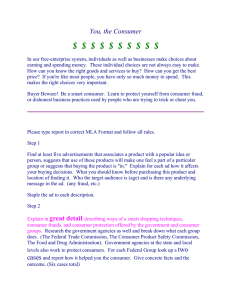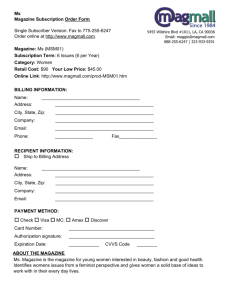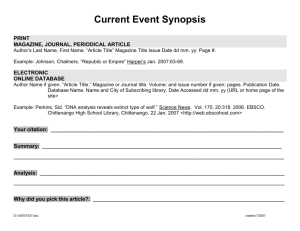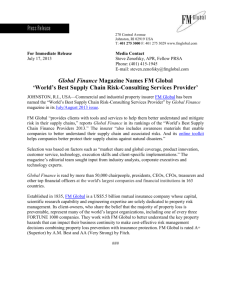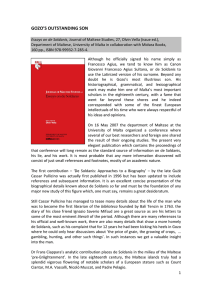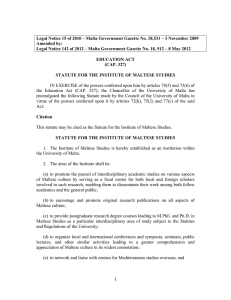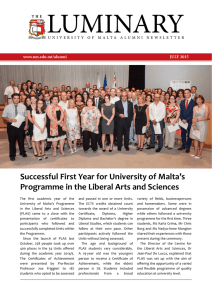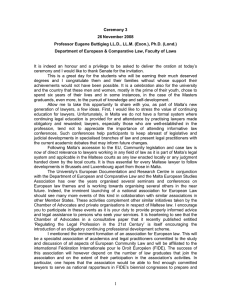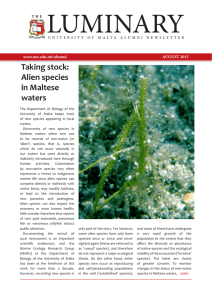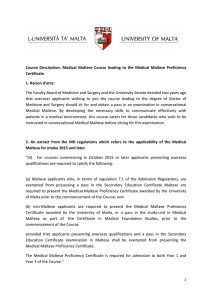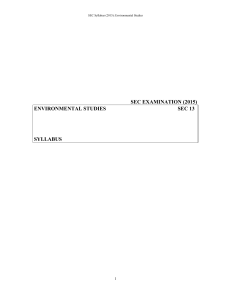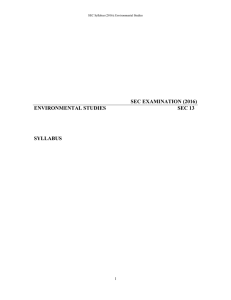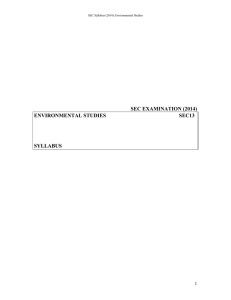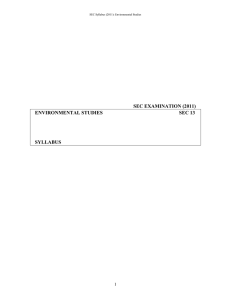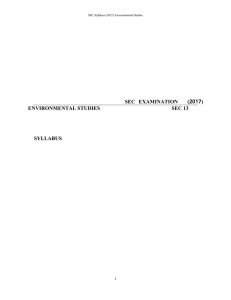desk_research_Malta
advertisement
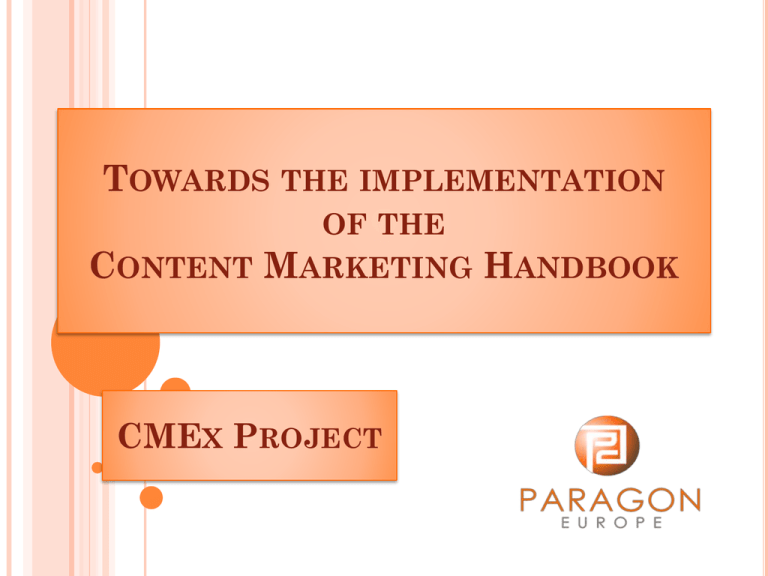
TOWARDS THE IMPLEMENTATION OF THE CONTENT MARKETING CMEX PROJECT HANDBOOK AN INTRODUCTION TO CONTENT MARKETING WHAT IS CONTENT MARKETING? Basically, content marketing aims at creating and sharing engaging and valuable content in a variety of formats (videos, white papers, e-books, info-graphics, case studies, how-to guides, etc.) to attract a specific target audience. This means that CM focuses on communicating with customers, in order to make them more informed and inspire their loyalty. EARLY EXAMPLES IN THE USE OF CONTENT MARKETING: In 1895 John Deere launched The Furrow magazine. Widely considered as the earliest example of content marketing, it is now the largest circulated farming magazine worldwide, published in 40 countries. In 1900 Michelin developed the Michelin Guide, including addresses of fueling stations, mechanics and tyre dealers. 35,000 copies of the first edition were distributed for free. In 1904 Woodward's Genesee Pure Food Company started the distribution of a cookbook to promote Jell-O, the gelatin dessert produced by the company: sales rose to over $1 million in a couple of years. In 1913, Burns and McDonnell introduced Benchmark Magazine, focused on topics related to engineering. The magazine is still published today both in printed and digital version. In 1922 Sears launched World’s Largest Store radio programme, keeping farmers informed during the deflation crisis. The initiative increased the company’s popularity among farmers. In 1982 Hasbro and Marvel Comics created G.I. Joe Comic Book. An animated television mini-series and video games were then developed, contributing to the huge success of the toys. MODERN EVOLUTION OF CONTENT MARKETING For a long time, the most common distribution method for content marketing has been mail. In the last decade eBooks, blogs, podcasts and ultimately Social Media like Youtube, Pinterest, Twitter, Facebook, etc. gained adoption as new ways to produce and distribute content. Nowadays, many international leading companies are engaged in some sort of content marketing and make wide use of the newest digital technologies to reach a huge range of customers worldwide. Content marketing is also being used by small businesses and not-forprofit organizations (92% of them in North America!) to better promote themselves. WHAT’S THE FUTURE OF CONTENT MARKETING? Brands will have to focus on: • the overall quality of the content disseminated (useful, entertaining, educational) • a multiplatform approach based on the use of modern and traditional, digital and printed resources. IN A FEW WORDS, GOOD CONTENT MARKETING WILL HAVE TO BE FOCUSED ON THE READER AND ON THE RIGHT CHANNELS TO INTERACT WITH HIM. USE OF INNOVATIVE MARKETING TOOLS IN MALTA According to MCA’s “e-Commerce business survey 2013”: • 69% of the companies interviewed has their own website (67% in 2012) • 46% of them created a website to attract customers, 14% for promotion and advertisement purposes, 9% to enhance the company’s image • 36% of them uses traditional marketing only, 21% uses both digital/online marketing and traditional marketing, 17% uses digital/online marketing only • The health/social field stands out as the most keen on using new technologies for marketing purposes • Facebook is the most popular tool to promote the company (85%) • Companies choose digital/online marketing because it guarantees a broader exposure, it is a popular trend and it seems to be more costeffective than traditional marketing HOW ARE MALTESE COMPANIES REACTING TO THE DIGITAL REVOLUTION? Digital marketing is growing up in popularity but some issues in the use of modern technologies remain: • most companies don’t know how to gauge ROI, i.e. understand how the use of social media affects their business • other concerns are related to the choice of the contents that might be posted on their website/accounts • companies find it difficult to keep up with digital platforms’ evolution (changes in their interface and services offered) • companies lack in-house qualified personnel • outsourcing content marketing management to external qualified professionals can be too expensive CONCLUSION • Maltese companies need to boost their competitiveness and learn how to better engage customers with exciting and useful content: to do so, they will have to develop a new approach to marketing and become familiar with modern communication platforms which are powerful means to interpret and guide consumers’ behaviour. • The development of the Content Marketing Handbook (CMH) will help interested stakeholders in getting the thorough understanding of content marketing’s potential that they currently lack. Paragon Europe will be a key-partner for the project’s implementation in Malta: • ensuring a close consultation with national experts, stakeholders and organizations • providing training, research and in-depth analyses related to the relevant topics • guaranteeing the widest dissemination of the information gathered, in order to enable the transfer of knowledge, good practices and innovation. THANKS FOR YOUR ATTENTION


